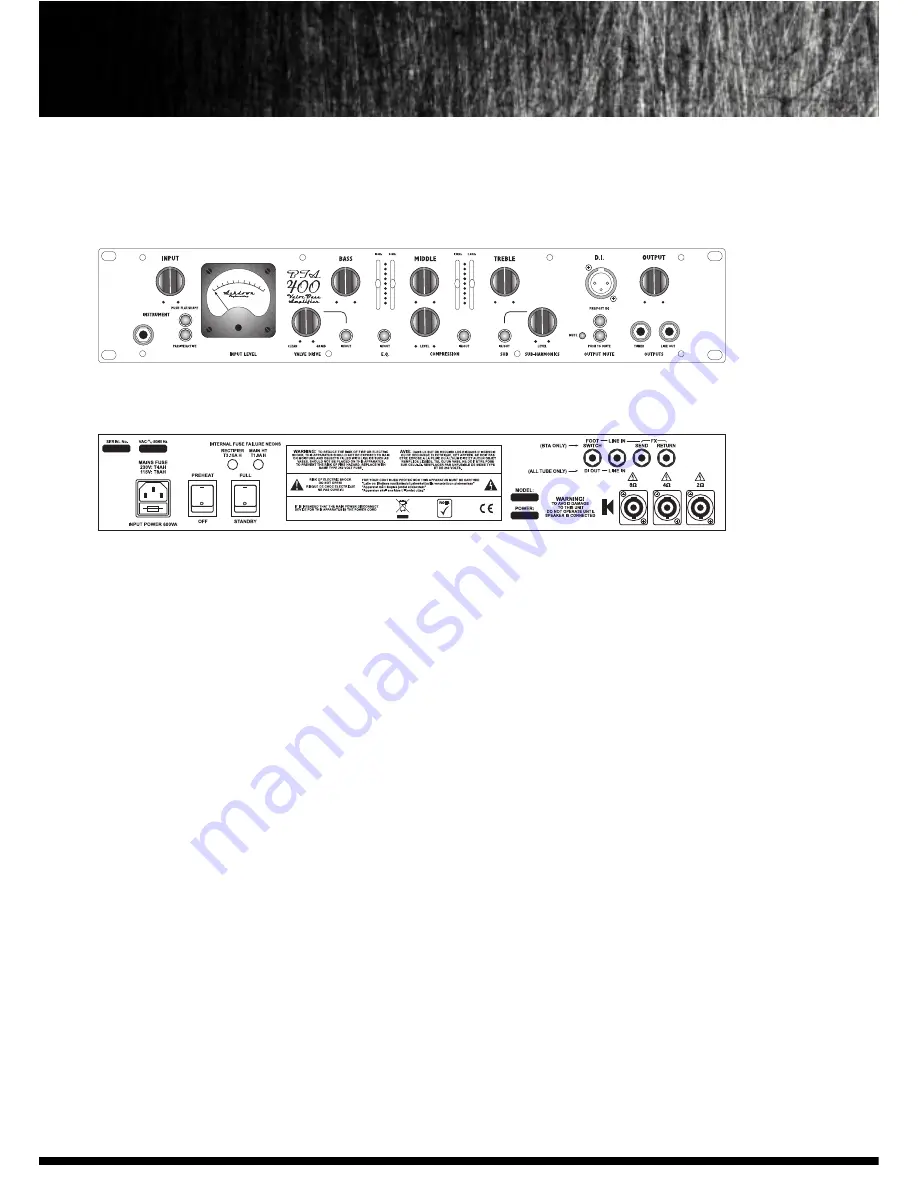
USER MANUAL
427 SMALL BLOCK • 550 SPYDER • 550 TOURING • BTA 200/300/400 • LITTLE BASTARD
VALVE BASS AMPS
BTA 200/300/400 HEADS
REAR PANEL
FRONT PANEL
FRONT PANEL FACILITIES
INPUTS - There is a single instrument input provided linked to a
PASSIVE/ACTIVE selector switch. The Passive input (switch out) is high
sensitivity and also high impedance to suit the output from PASSIVE basses.
The Active input (switch in) is low sensitivity and lower impedance to suit the
output from ACTIVE basses.
INPUT CONTROL - The INPUT control sets the signal level through the
preamp in conjunction with the INPUT LEVEL VU Meter. This is adjusted to
give a reading of 0VU on the meter for average playing dynamics with
occasional peaks into the red region. Please note that the setting of this may
have to be re-adjusted after modification of the EQ controls.
PUSH FLAT / SHAPE - With this button in its OUT position a fixed E.Q. is
superimposed on the preamp to give a bright but punchy character to the
sound. Pushing this button IN returns the preamp to a Flat frequency
response.
This function may also be controlled from a footswitch. For the footswitch to
operate this button must be in its OUT position.
VALVE DRIVE - This routes the signal either through a clean Solid State
amplification section (control on zero) or through a Dual Triode Tube
amplification/overdrive section in order to add either tonal character i.e.
warmth with the control set at 9 o’clock, a slight edge in the sound at 12
0’clock through to an increasing degree of Tube distortion/overdrive as the
control is advanced to maximum.
A Mix of these two amplification sections can be achieved with this control.
N.B. The degree of tube distortion provided by this control will also depend on
the setting of the INPUT control.
VALVE DRIVE IN/OUT - This push button switches the valve drive section IN or
OUT. This function may also be controlled from the Ashdown 4 way
footswitch. For the footswitch to operate this button must be in its OUT
position.
E.Q. IN / OUT - This push button switches the Equalisation section IN or OUT
i.e. the Bass, Middle and Treble controls plus the two sets of sliders placed
between each of these.
This function may also be controlled from the Ashdown 4 way footswitch. For
the footswitch to operate this button must be in its OUT position.
EQ CONTROLS - These consists of BASS, MIDDLE and TREBLE controls with
two sliders placed between each control. These can be used in a number of
ways:
Firstly as a very simple Bass, Middle and Treble tone control section as found
on older traditional amplifiers. This is done by leaving the two sets of sliders
interposed between these controls set in their centre positions and using only
the BASS, MIDDLE and TREBLE controls to alter the overall tone.
Secondly, if more control is required then the sliders can also be used to
tailor the E.Q. in the regions between the main tone controls.
This provides a very versatile Equalisation section, it is simple to understand
and operate, yet provides a wide degree of variation. It retains the simplicity
of a three-control tone section but provides the flexibility of a graphic
equaliser.






























